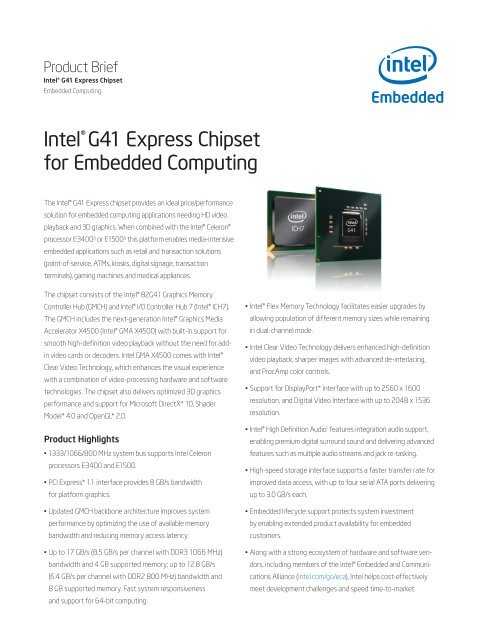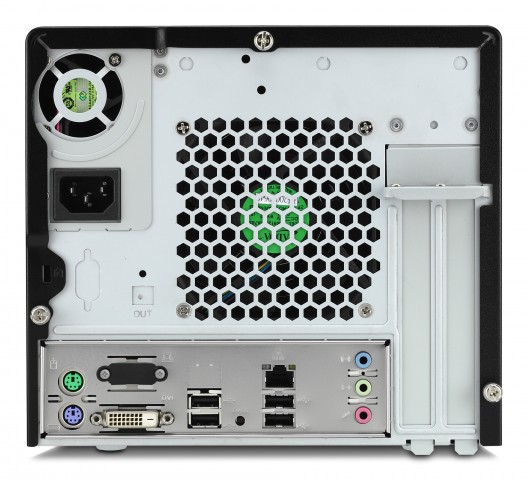
- #Intel g41 express chipset shader model 3.0 serial
- #Intel g41 express chipset shader model 3.0 upgrade
- #Intel g41 express chipset shader model 3.0 series
- #Intel g41 express chipset shader model 3.0 windows
resolution of 2048x1536 for both analog and digital displays, 2 SDVO ports for flat-panels and/or TV-Out via ADD2 cards or media expansion cards.ģD-wise, GMA 950 supports up to four pixels per clock rendering, Microsoft DirectX 9.0 hardware acceleration & Vertex shader 3.0 and OpenGL 1.4 with ARB extensions on Windows. video memory through DVMT scheme, 1.6 GPixels/s and 1.6 GTexels/s fill rate, a max. The processor includes an up to 400 MHz 256-bit core, supporting up to 10.6 GB/s memory bandwidth with DDR2-667 system RAM, up to 224 MB max. The GMA 950 was the second graphics core produced under Intel's Graphics Media Accelerator product name, and was incorporated in the Intel 945G chipsets. In mobile chipsets, up to two 18-bit 25–112 MHz LVDS transmitters are included.
#Intel g41 express chipset shader model 3.0 serial
The display unit includes a 400 MHz RAMDAC, two 25–200 Mpixel/s serial DVO ports, and two display controllers. The processor uses different separate clock generators for display and render cores.

Like previous Intel integrated graphics parts, the GMA 900 has hardware support for MPEG-2 motion compensation, color-space conversion and DirectDraw overlay. However, the architecture still lacks support for hardware transform and lighting and the similar vertex shader technologies.

At 333 MHz, it has a peak pixel fill-rate of 1332 megapixels per second. It operates at a clock rate ranging from 160 to 333 MHz, depending on the particular chipset. It is a 4 pixel per clock cycle design supporting DirectX 9 pixel shader model 2.0.
#Intel g41 express chipset shader model 3.0 upgrade
The 3D architecture of the GMA 900 was a significant upgrade from the previous Extreme 3D graphics processors. The GMA 900 was the first graphics core produced under Intel's Graphics Media Accelerator product name, and was incorporated in the Intel 910G, 915G, and 915Gx chipsets. Graphics cores Intel GPU based Generation three based
#Intel g41 express chipset shader model 3.0 series
With the introduction of the Platform Controller Hub, the Graphics Media Accelerator series ceased, and the CPU-based Intel HD and Iris Graphics series was created. Intel used the low-power PowerVR MBX designs in chipsets supporting their XScale platform, and since the sale of XScale in 2006 has licensed the PowerVR SGX and used it in the GMA 500 IGP for use with their Atom platform. While GMA performance has been widely criticized in the past as being too slow for computer games, sometimes being derogatorily nicknamed Intel 'GMD' (Graphics Media Decelerator) and being essentially referred to as the world's first "graphics decelerator" since the low-performing S3 ViRGE, the latest GMA generation should ease many of those concerns for the casual gamer.ĭespite similarities, Intel's main series of GMA Integrated Graphics Processors (IGPs) is not based on the PowerVR technology Intel licensed from Imagination Technologies. Many of the advantages of the new GMA architecture come from the ability to flexibly switch as needed between executing graphics-related tasks or video-related tasks. The 4th generation of GMA combines fixed function capabilities with a threaded array of programmable executions units, providing advantages to both graphics and video performance. However, with the introduction of Intel's 4th generation of GMA architecture ( GMA X3000) in 2006, many of the functions are now built into the hardware, providing an increase in performance. The original architecture of GMA systems supported only a few functions in hardware, and relied on the host CPU to handle at least some of the graphics pipeline, further decreasing performance. Later, Intel integrated the i740 core into the Intel 810 northbridge. The GMA line of GPUs replaces the earlier Intel Extreme Graphics, and the Intel740 line, the latter of which was a discrete unit in the form of AGP and PCI cards with technology that evolved from companies Real3D and Lockheed Martin.


( August 2011) ( Learn how and when to remove this template message) Unsourced material may be challenged and removed. Please help improve this article by adding citations to reliable sources. This section needs additional citations for verification.
#Intel g41 express chipset shader model 3.0 windows


 0 kommentar(er)
0 kommentar(er)
